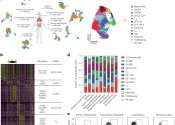Unraveling the roles of non-coding DNA explains childhood cancer's resistance to chemotherapy
St. Jude Children's Research Hospital scientists have identified specific DNA variants in the non-coding regions of the genome contributing to chemotherapy resistance in acute lymphoblastic leukemia (ALL). The results guided ...
May 1, 2024
0
14









